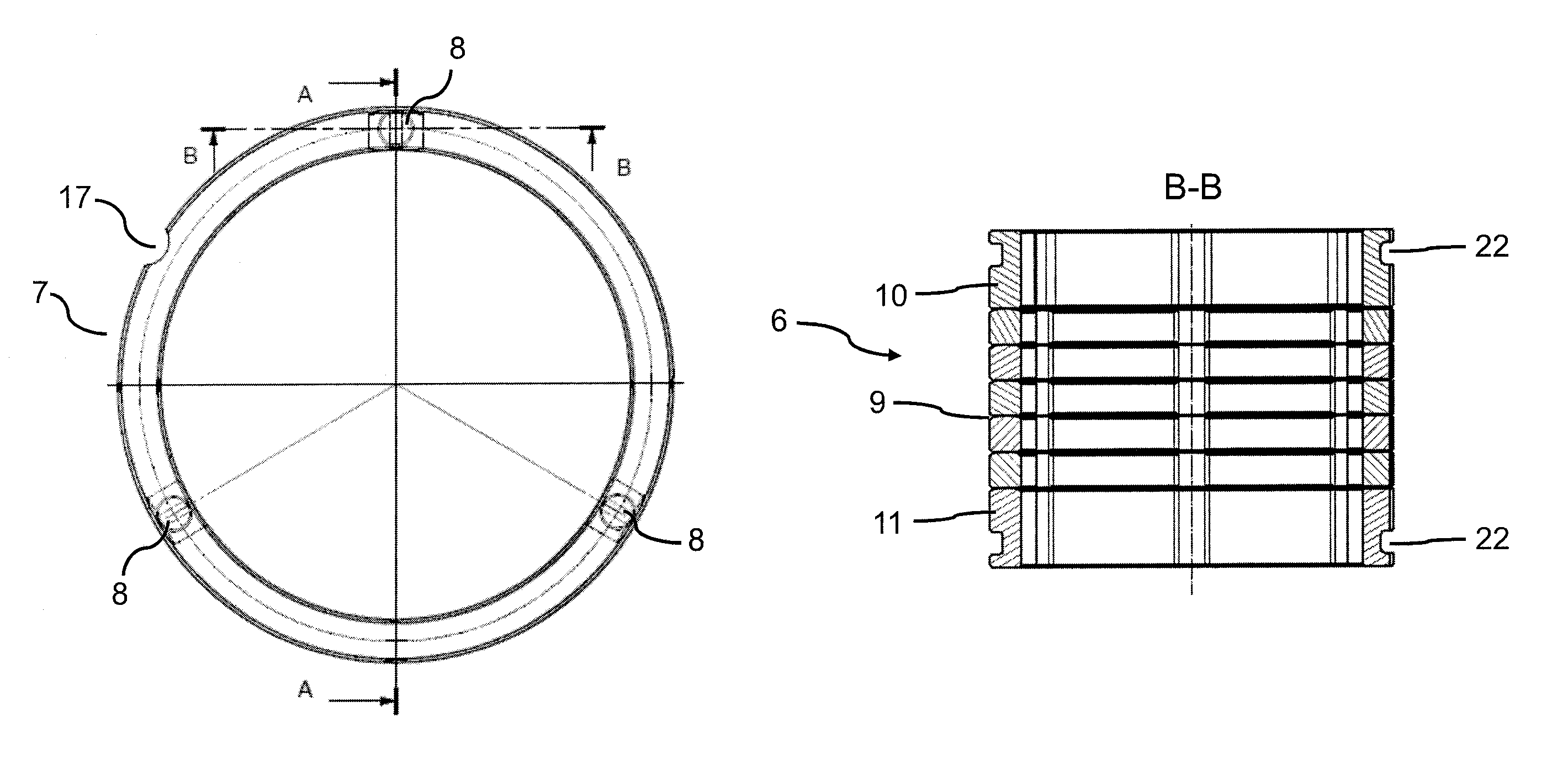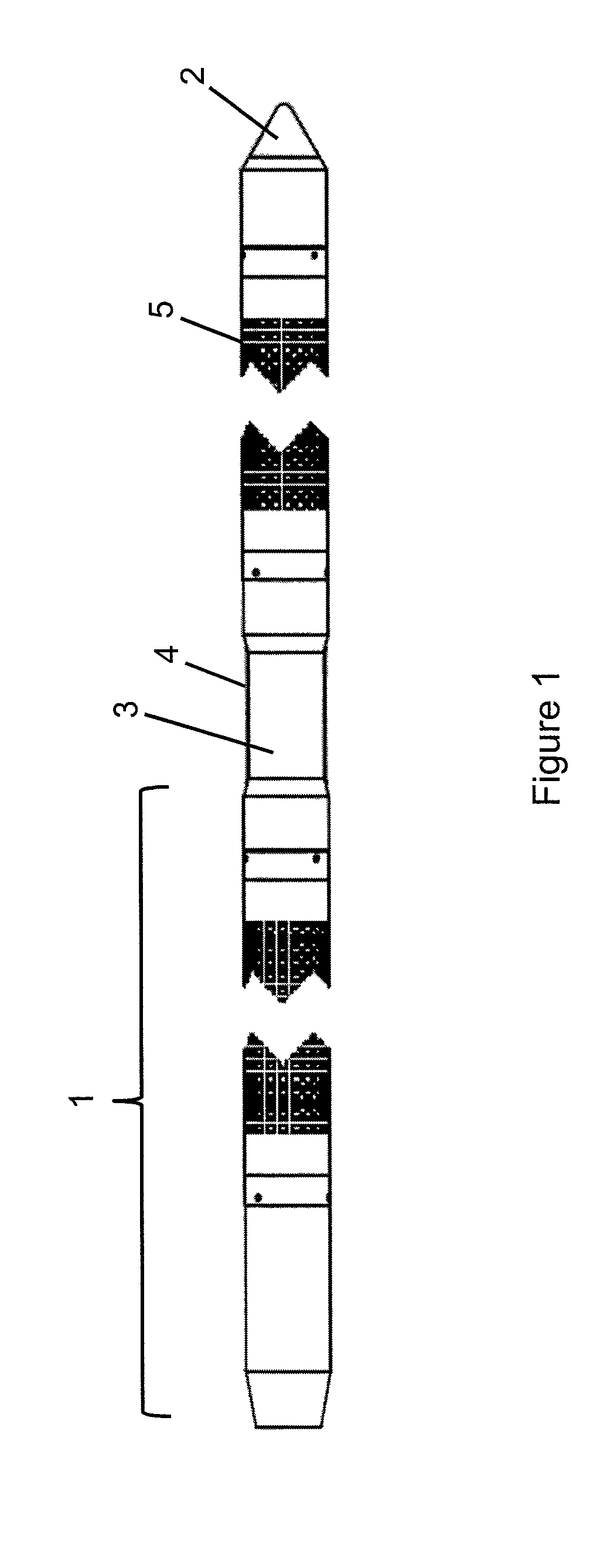Wear-resistant separating device for removing sand and rock particles
a separation device and rock technology, applied in the field of new separation devices, can solve the problems of filter damage, low wear resistance, wire meshes, etc., and achieve the effects of reducing the tendency to fracture, improving wear resistance, and prolonging service li
- Summary
- Abstract
- Description
- Claims
- Application Information
AI Technical Summary
Benefits of technology
Problems solved by technology
Method used
Image
Examples
example 1
Resistance to Erosion
[0174]To determine the erosive wear, plates (about 75×75×50 mm) of steel, a porous, sintered silicon carbide ceramic and fine-grained, densely sintered silicon carbide ceramic (SSiC) of the type EKasic® F (ESK Ceramics GmbH & Co. KG) were subjected to a sand blasting test. The steel specimen served in this case as a reference.
[0175]The tests were carried out by means of a sand blasting installation. Four different supporting materials that are typically used in offshore drilling operations served as blasting media: (1) 100 Mesh Frac Sand, (2) 16 / 20 Mesh Frac Sand, (3) 20 / 40 Mesh Frac Sand and (4) 20 / 40 Mesh Frac Sand High Strength. The blasting pressure was 2 bar and the blasting duration 2 hours, the jet being applied almost in the form of a point at an angle of 90° to the surface. The depth and width of the blasting impression characterize the erosive wear (see Table 1).
[0176]The tests show that the densely sintered silicon carbide ceramic is much more resista...
PUM
 Login to View More
Login to View More Abstract
Description
Claims
Application Information
 Login to View More
Login to View More - R&D
- Intellectual Property
- Life Sciences
- Materials
- Tech Scout
- Unparalleled Data Quality
- Higher Quality Content
- 60% Fewer Hallucinations
Browse by: Latest US Patents, China's latest patents, Technical Efficacy Thesaurus, Application Domain, Technology Topic, Popular Technical Reports.
© 2025 PatSnap. All rights reserved.Legal|Privacy policy|Modern Slavery Act Transparency Statement|Sitemap|About US| Contact US: help@patsnap.com



